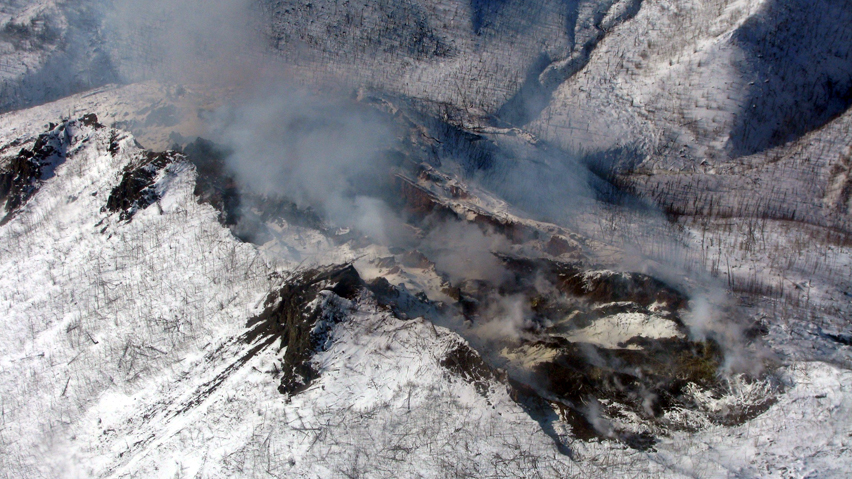
Nobody seems to know exactly what's burning. Experts suspect it's either a volcano forming or natural gas or oil burning in underground shale deposits. Whatever it is, the fire has been burning on a remote mountaintop, about 40 kilometres north of the community since last October at least.
When the wind is right, residents can smell noxious smoke all over town.
Extreme heat
Pat Sanders, a ranger who works in the in the Yukon-Charley Rivers National Preserve, said measurements have been taken showing there's extreme heat coming out of fissures in the ground.
"[It's] 285 degrees Celcius and that one wasn't even smoking," Sanders said. "There's a lot of heat involved and it's still very, very active and we don't know [what] it's going to do or how far it extends but we've taken a progression of pictures throughout since October of last year and the changes in the landscape are just dramatic."
Environmental protection agencies have promised air monitors for people in Eagle. They say the sulphur dioxide gases that drift into town are raising health concerns.
Sanders said the fire started with an underground explosion last fall but the effects are visible on the surface. The fire zone used to cover about 5 acres, but it's grown to about 30 after burning all year, Sanders says.
"[There's] huge orange rocks steaming and smoking and some yellow sulphur rock. It actually looks like a bomb has gone off somewhere."
Aerial photos suggest a volcano forming but geologists say it's likely an underground shale gas fire. Sanders said the air monitors will be welcome, although there's no indication when they might be coming.
"We're happy for that because we don't know how much sulphur dioxide on windy days we are actually breathing".



Comment: The planet is opening up!
This is further evidence that SOTT is on the right track about 'climate change': *localized* warming, within an overall trend of global cooling, is the result of increased volcanic and subterranean activity.